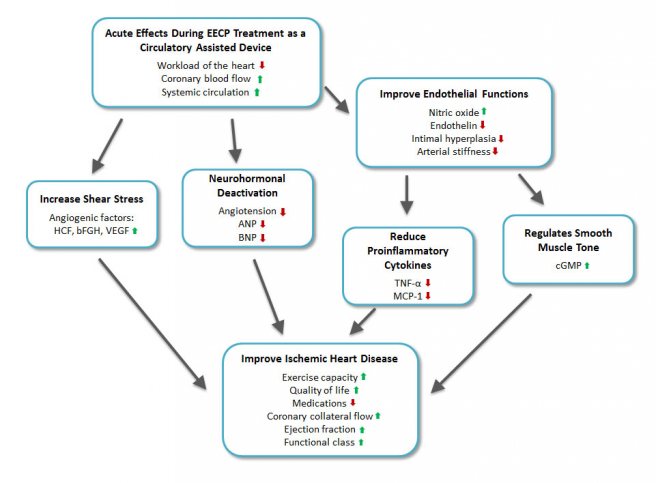Mechanisms of Action
There is evidence demonstrating improved endothelial function via the hemodynamic effects by the increased shear stress acting on the arterial wall, reducing arterial stiffness and providing protective effects against inflammation, inhibiting intimal hyperplasia and the atherosclerotic process.

There is also evidence that EECP/ECP therapy triggers a neurohormonal response that induces the production of growth and vasodilatation factors, which together with the increased pressure gradient created across the occlusive site during EECP/ECP therapy, promotes recruitment of new arteries, while dilating and normalizing the function of existing blood vessels. The collaterals bypass stenoses and increase blood flow to ischemic areas of the heart, leading to improved clinical outcomes.
2012 EECP® Therapy is listed in the ACCF/AHA 2012 Clinical Guidelines for SIHD with a IIb Level of Recommendation
2013 EECP® Therapy is added to the 2013 European Society of Cardiology (ESC) Guidelines on the Management of Stable Coronary Artery Disease (SCAD), with a IIa Level of Recommendation







